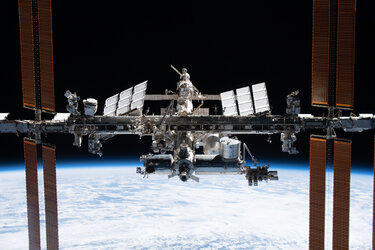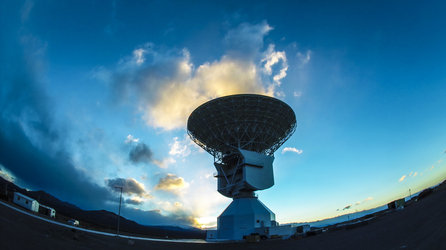Big Iron gets technology boost
ESA deploys ‘big iron’ to communicate with its deep-space missions: three 35 m-diameter dishes employing some of the world’s most advanced tracking technology. And it’s about to get a boost.
ESA’s three Deep Space Antenna stations at New Norcia, Australia, Cebreros, Spain and Malargüe, Argentina, beam commands and receive data from spacecraft voyaging hundreds of millions of kilometres into our Solar System.
The trio form part of ESA’s Estrack tracking network a global system of stations providing links between satellites in orbit and the European Space Operations Centre, Darmstadt, Germany. The core network comprises 10 stations in seven countries.
The huge dishes – whose moveable structures weigh in at 620 tonnes – can be rotated, elevated and aimed with pinpoint accuracy despite high winds and heat, and transmit radio signals with up to 20 kW of power – enough to make, roughly, 10 000 pots of kitchen coffee.
The stations’ stellar performance, however, isn’t just about big moving, mechanical things: they make use of advanced, made-in-Europe electronics, including cryogenically cooled low-noise amplifiers and exquisitely machined mirrors made of metal.
Mirrors made of metal

Exploiting the fundamental physics of radio waves and properties of geometric shapes, the stations use ‘dichroic mirrors’ made of metal, not glass, to reflect and separate the transmitted and received beams.
These mirrors are a metallic latticework comprising thousands of small shapes – either rectangles or crosses – and enable the stations to differentiate between radio signals ranging in frequency from 2 GHz to 40 GHz.
Using their original mirrors and frequencies, the stations, which entered service in 2001 (Australia), 2006 (Spain) and 2013 (Argentina), have provided flawless links with multiple ESA missions, including Gaia, Mars Express and Rosetta, as well as those of partner agencies such as NASA.
But they were designed to allow future upgrades, and with ESA’s growing Solar System exploration plans, the future is here.
More data, deeper space

Access the video
“Future exploration missions to destinations like Jupiter, Ganymede and Mercury will deliver much more scientific data from much further away, and this requires increasing the stations’ transmit and receive capabilities,” says Pier Mario Besso, an ESA antenna engineer.
Furthermore, spaceborne observatories like Herschel/Planck in the past and Gaia today traditionally use the 8 GHz band for beaming data back, while future missions such as Euclid will move to the 26 GHz band, which offers four times more data bandwidth.
This means upgrading the current fixed, solid dichroic mirrors with newer versions that can move between various mechanical positions, and cryogenically cooling microwave components to make them more sensitive.
As a measure of how much this will improve performance, consider that the stations typically offer a download rate of 228 kbit /s from Mars Express circling the Red Planet, and 7.6 Mbit/s from Gaia, some 1.5 million km from Earth.
When complete, the station improvements will boost this to, typically, 2.2 Mbit/s for ExoMars, and a whopping 74 Mbit/s for Euclid at Gaia’s distance – about four times faster than a typical home broadband Internet connection.
Future proofing the stations
ESA is now upgrading the three deep-space sites to work at these new frequencies.

“The work we’re doing now to improve the design and performance will enable additional improvements as technology matures in the future,” notes Pier Mario.
Plans already foresee improved cryogenic cooling for the microwave feed systems, and 80 kW power amplifiers are being developed, which would give ESA the invaluable ability of coping with emergency situations at interplanetary distances – only NASA’s 70 m dishes can do that today.
Further into the future, ESA is exploring new possibilities for increasing data return, perhaps through arrays of deep-space antennas.
“The demand for data from deep space is only going to increase,” says Pier Mario. “ESA operates, or will soon operate, spacecraft exploring increasingly farther away that deliver increasing amounts of information.
“They are travelling to the frontiers of human knowledge, and Estrack provides the link that brings their data down to Earth.”














 Germany
Germany
 Austria
Austria
 Belgium
Belgium
 Denmark
Denmark
 Spain
Spain
 Estonia
Estonia
 Finland
Finland
 France
France
 Greece
Greece
 Hungary
Hungary
 Ireland
Ireland
 Italy
Italy
 Luxembourg
Luxembourg
 Norway
Norway
 The Netherlands
The Netherlands
 Poland
Poland
 Portugal
Portugal
 Czechia
Czechia
 Romania
Romania
 United Kingdom
United Kingdom
 Slovenia
Slovenia
 Sweden
Sweden
 Switzerland
Switzerland





























